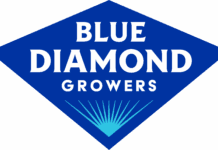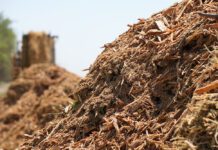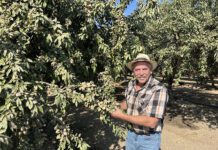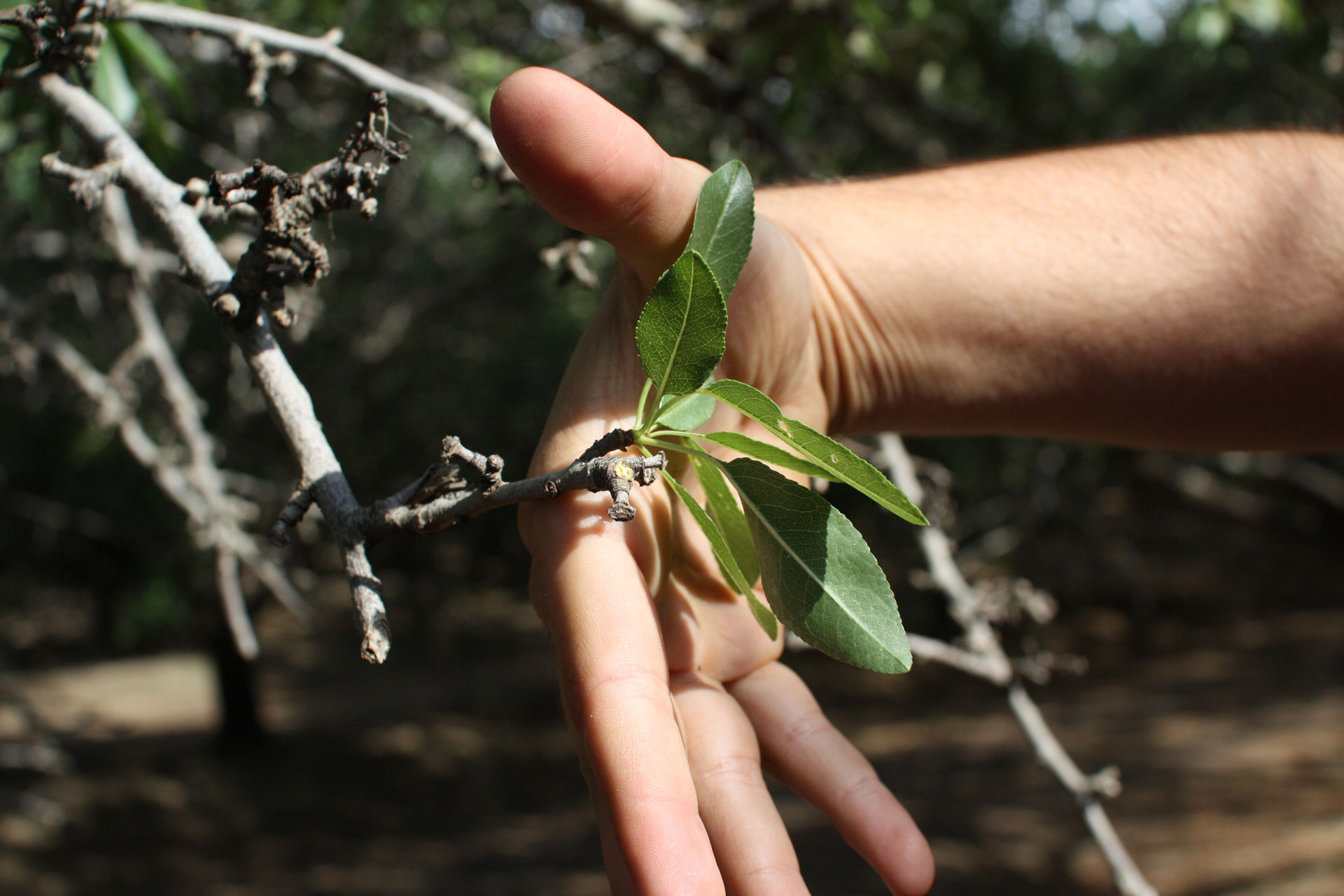
California almond growers are embracing opportunities to improve nitrogen use efficiency and should be applauded for doing so, according to Patrick H. Brown, a professor in the Department of Plant Sciences at UC Davis. But, he said, more can be done, and only through recognition of how nitrogen is utilized by the tree can growers reach 100% efficiency.
The biggest key to realizing optimum performance and minimum loss, Brown said, is a recognition that nitrogen uptake in trees is directly correspondent to yield. That concept was discussed in a research paper that Brown, fellow UC Davis Plant Sciences Professor Emilio Laca and three graduate students published in 2012, and it has been widely adopted by almond growers.
In the paper, the researchers documented that in a typical orchard, for every 1,000 pounds of kernel yield, 68 pounds of nitrogen is required. “Add to that some allowance for tree growth and apply it efficiently and you have a recipe for great productivity and minimum N loss,” Brown said.
The paper, which has been widely circulated over the last decade, also brought forward the concept of sampling leaf tissue in April as opposed to the standard sampling timing of July or August, another change that has found advocates.
Unlike when sampling in August, April sampling enables growers to adjust nitrogen programs based on projected yields, Brown said. “It enables a grower to say, ‘I am just coming into spring, I can see it is a bumper crop this year, my leaf tissue suggests I have marginal nitrogen, so I better increase my nitrogen a little bit to compensate for that,’ or the same in reverse,” Brown said.
When sampling in August, it typically is too late for growers to adjust a nitrogen budget for the current year, Brown said, as growers have already applied nearly all of the nitrogen they are going to apply for that year’s crop. “And, frankly,” Brown said, “it is too early to give information about the next year, because you can’t predict next year’s nutrition demand, because that is going to depend on how many nuts get set on the tree. And you cannot know in August of 2020 how many nuts you are going to have in the tree in August of 2021.”
Brown added that in cases where leaf tissue analysis shows a nitrogen deficiency, adding nitrogen may not always be the solution.
Nitrogen Budget
If your leaf is short of nitrogen, you should first look at your N budget. And if your budget shows you have given the tree plenty of nitrogen, then what you need to do is find out where it went. And if it is being lost, improve your application methods, your uniformity and increase your efficiency, rather than put on more nitrogen,” Brown said. “Try to work out where did I go wrong? How come my trees are yellow even though I followed the N budget properly?
“A grower should never look at a leaf-tissue analysis and say, ‘Oh, I need more nitrogen,’” Brown said. “They should first say, ‘Well, let me have a look at my budget. Was I under budget? And if I am not underbudgeted, why are these leaves yellow? Let’s look at my efficiency.’ That is the thought process and it is the only way we are going to get around nitrate pollution of the groundwater and all of the problems that that is causing us.”
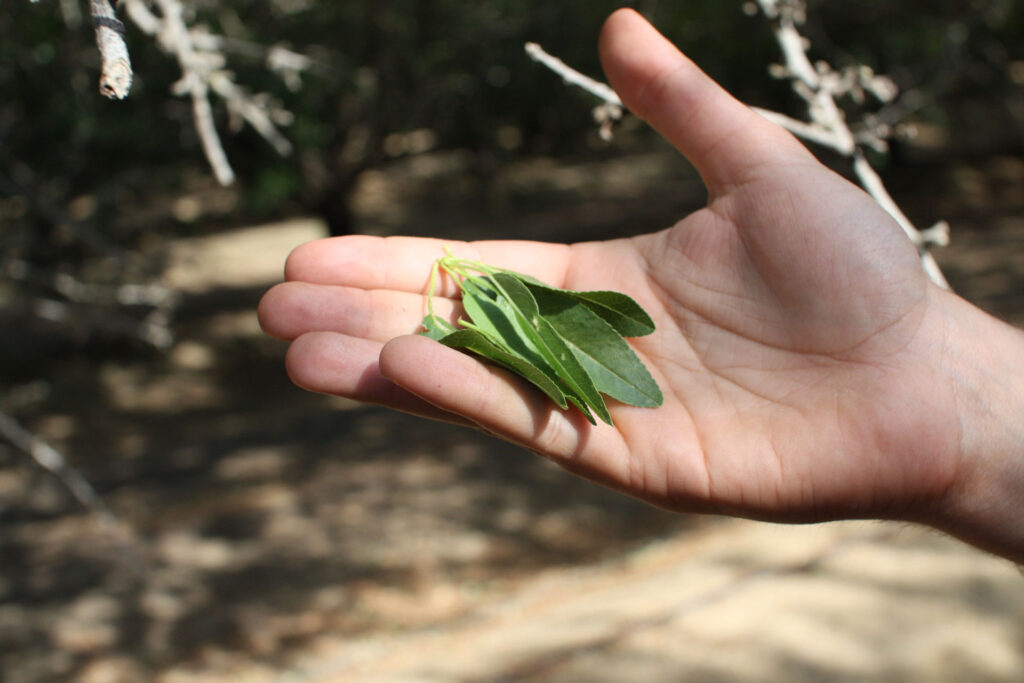
Brown added that overapplying nitrogen serves no benefit. “Growers cannot enhance productivity by overapplying nitrogen,” he said. “Like chickens in an egg farm, you feed them what they need, and you aren’t going to get more eggs by feeding them more than what they need.”
Brown characterized the almond industry’s embrace of nitrogen use efficiency in recent years as a “wonderful development.”
“If you go back 20 years and ask an average almond grower what they do, they would say they apply 250 to 275 pounds of nitrogen,” Brown said. “And if you said, ‘But you have a five-year-old orchard and a 15-year-old orchard, one yielding 3,000 pounds and one 1,500 pounds.
Should they both get the same?’ And they would say, ‘Maybe not, but it’s not easy to know for sure and it is easier to avoid loss by erring on the high side.’
“Now they are thinking and saying, ‘Okay, this is only the fifth leaf. It is only 1,500 pounds, and I’m only going to give it this much nitrogen. Or it is a 19-year-old orchard and it is on its way out, so I am going to give it less,’” Brown said. “Many growers have done that.”
When determining a nitrogen budget, Brown said growers should factor in the residual nitrogen in a system, primarily the nitrogen found in irrigation water.
“Nitrogen in irrigation water is an excellent and free N fertilizer and should be included in your total annual N budget,” the researchers wrote in the 2012 paper.
Proper timing of nitrogen applications is another key to achieving maximum results from your nitrogen budget, Brown said, with the first application optimally going on no earlier than 50% leaf-out.
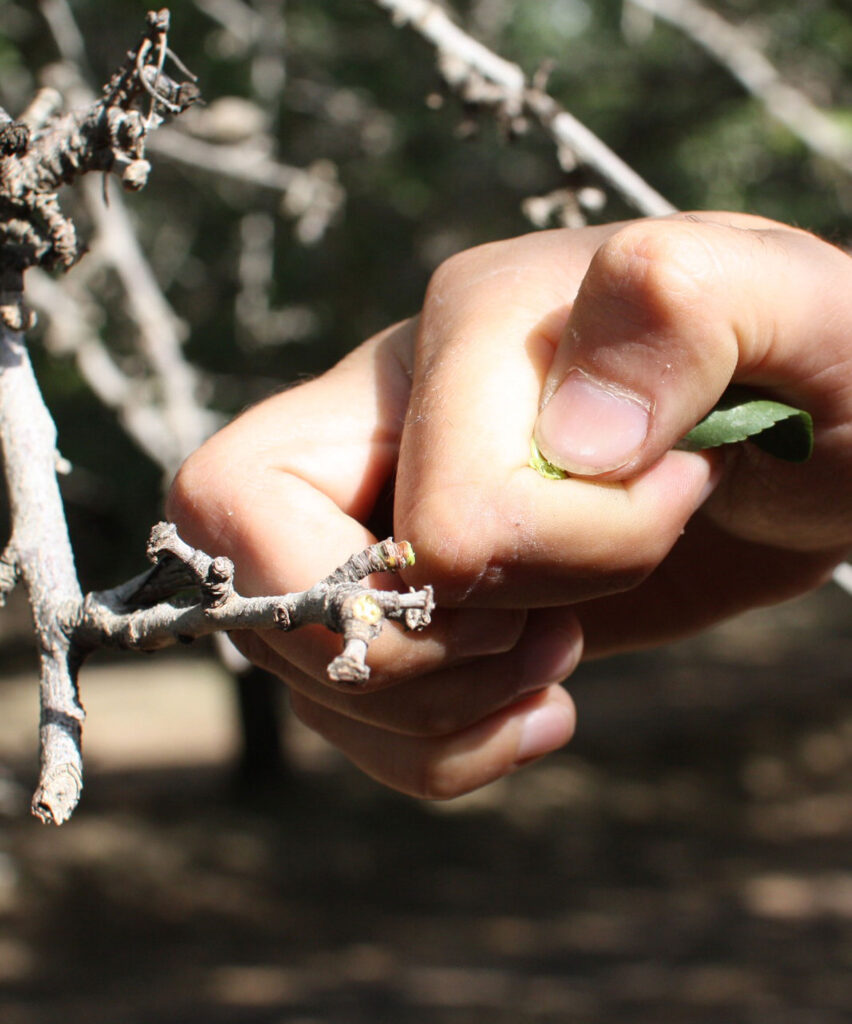
“Trees don’t start using nitrogen from the soil until their leaves are 50% expanded,” Brown said. “Prior to that, they are growing off the nitrogen they stored the prior year.”
When sampling leaves, Brown said it is important for growers to pull multiple samples. The 2012 research paper recommends growers take 18 to 20 samples from trees at least 30 feet apart in any one orchard.
“That gives you a statistically valid average for that portion of the orchard,” Brown said.
Further information on sampling techniques can be found in the Almond Board of California publication titled ‘Nitrogen Best Management Practices’ at almonds.com/sites/default/files/2020-12/ABC_Nitrogen_8.5x11_vmags.pdf.
The 2012 UC Davis research paper also advised growers to apply nitrogen in several small doses during the season rather than in one shot, another concept that has been embraced by growers in recent years and one that Brown believes is another key to optimizing nitrogen performance.
“If you’ve got an orchard that needs 200 pounds of nitrogen and you put 200 pounds on the ground in January, on paper, that might look balanced,” Brown said. “In reality, much of that 200 pounds is going to be pushed below the rootzone before the tree needs it in June or July.
“You are much better off putting on multiple applications,” he said.
Brown, who was awarded the Dennis R. Hoagland Award from the American Society for Plant Biology and the Leo M. Walsh Soil Fertility Distinguished Lectureship from Soil Science of America last May, said that orchard variability can make it difficult for growers to maximize nitrogen benefits in a way that minimizes losses. But, he said, “It can be done.”
“It is going to take more work than just throwing it all on the ground and hoping for the best,” Brown said. “But absolutely, a grower can achieve great productivity and high efficiencies of nitrogen in drip irrigation or microsprinkler systems.”







